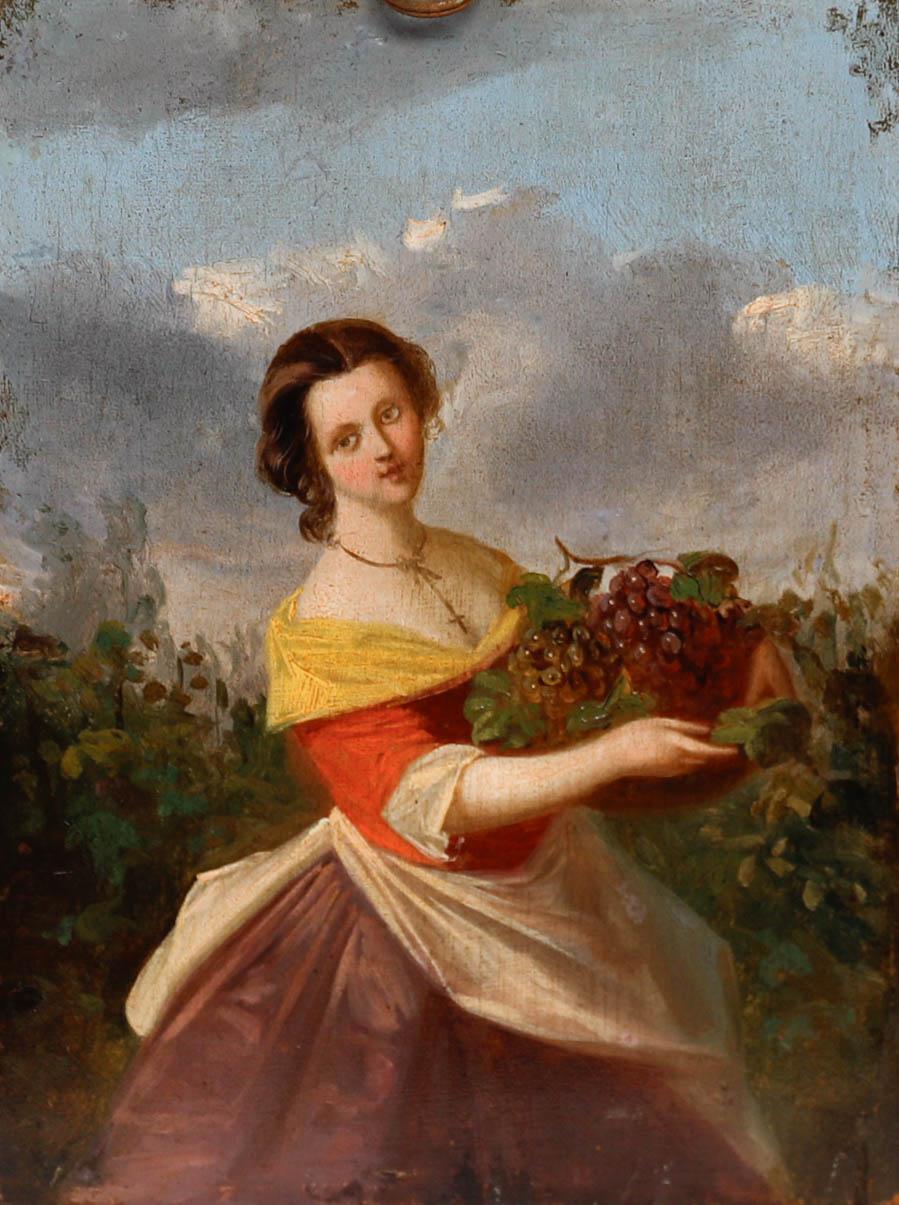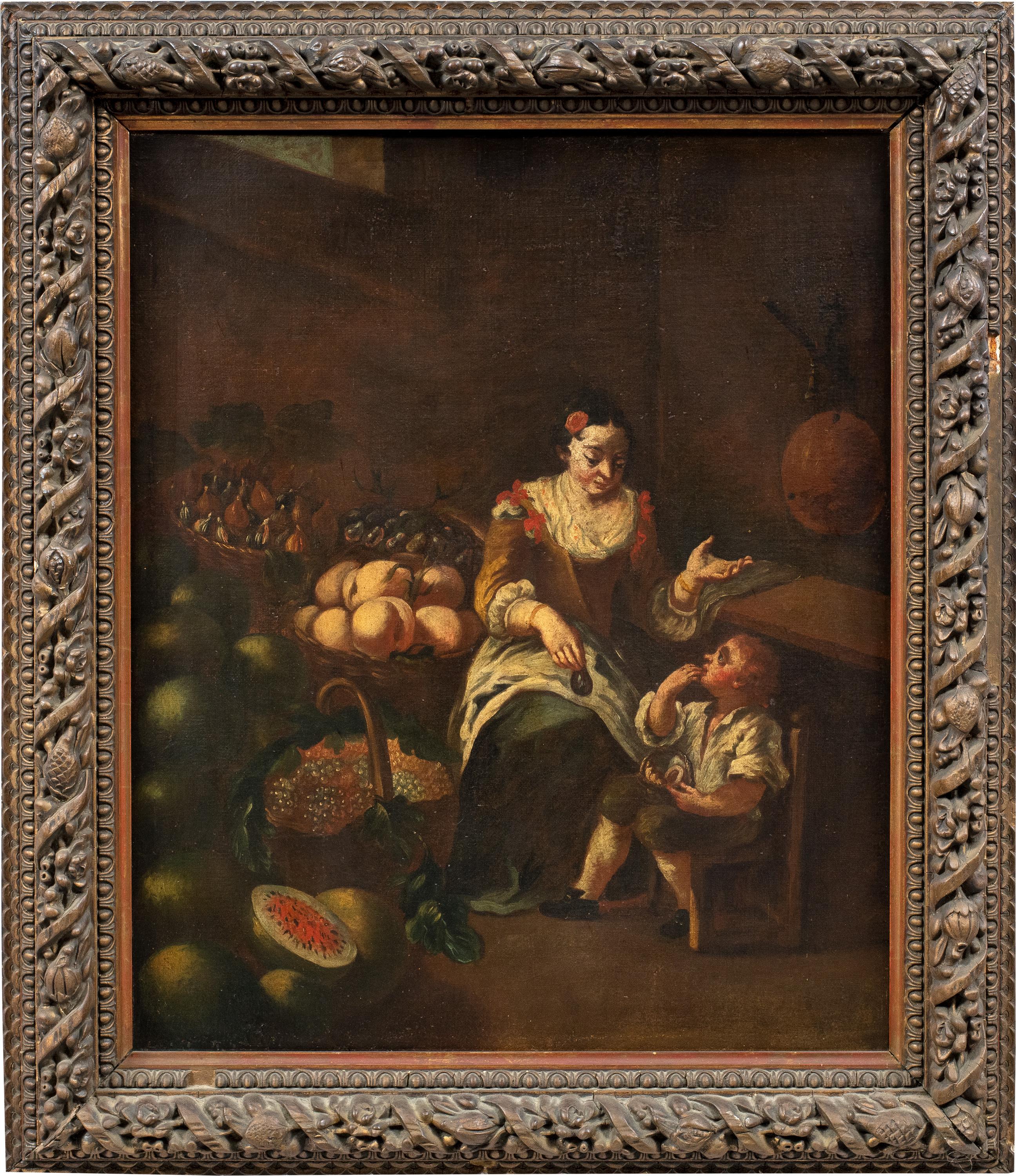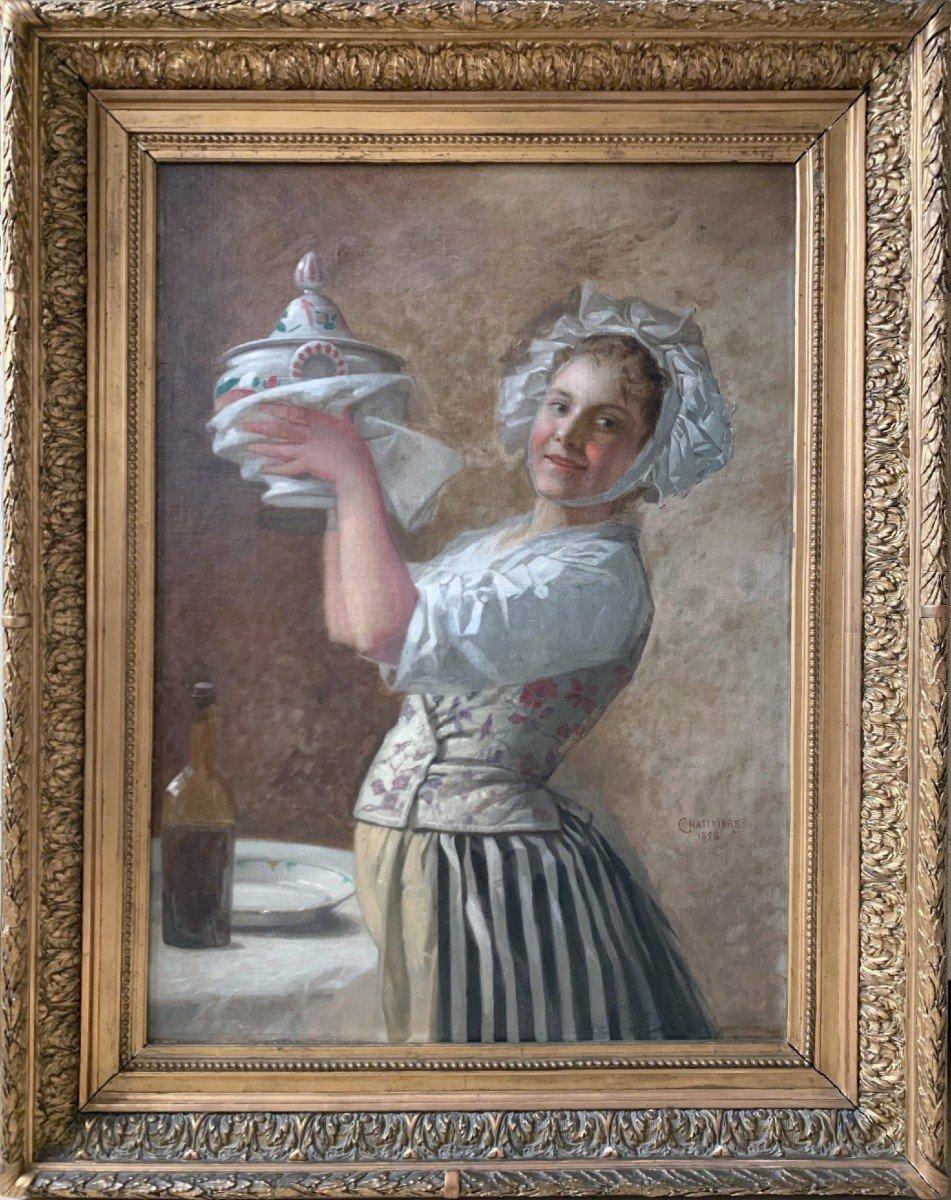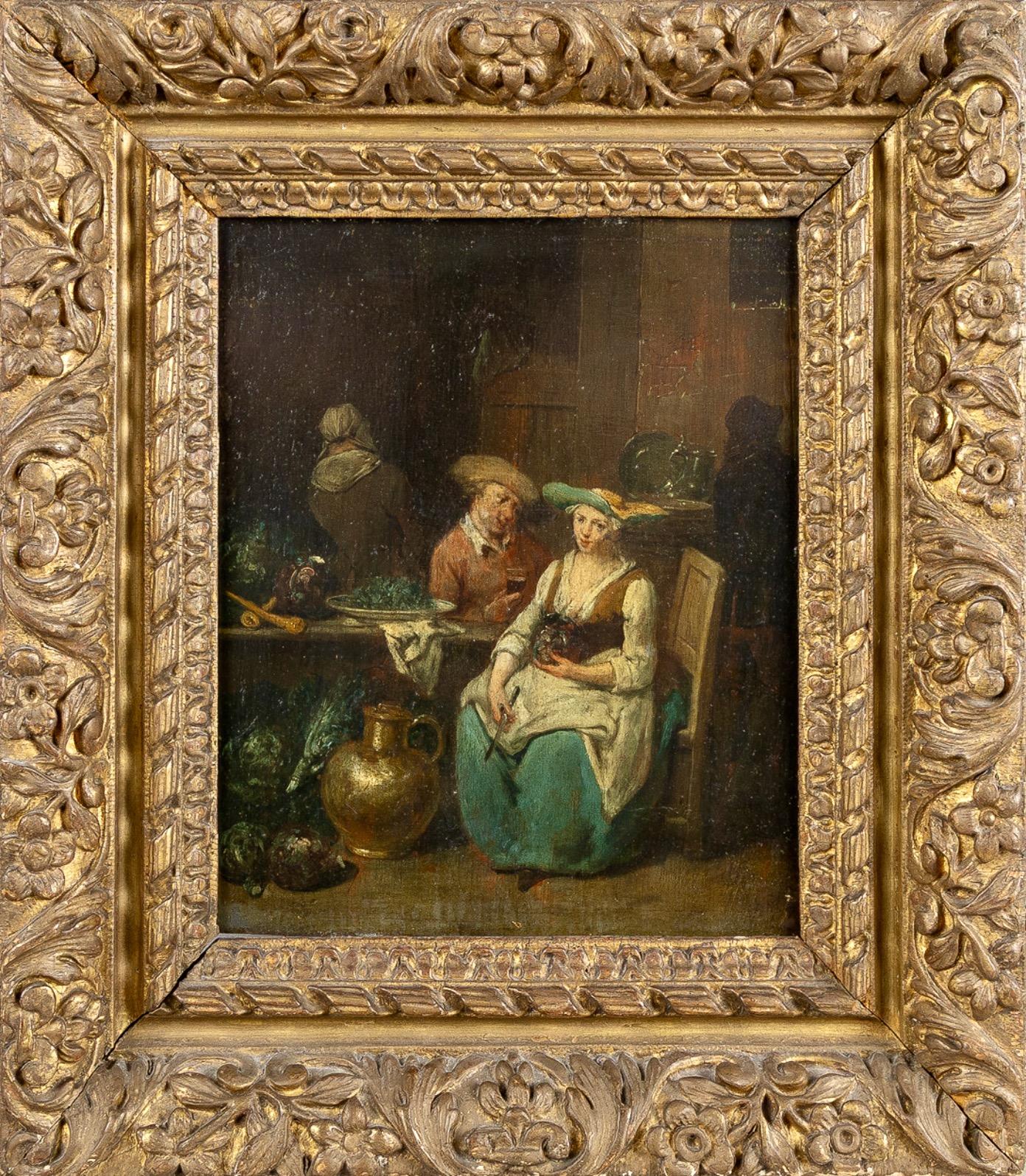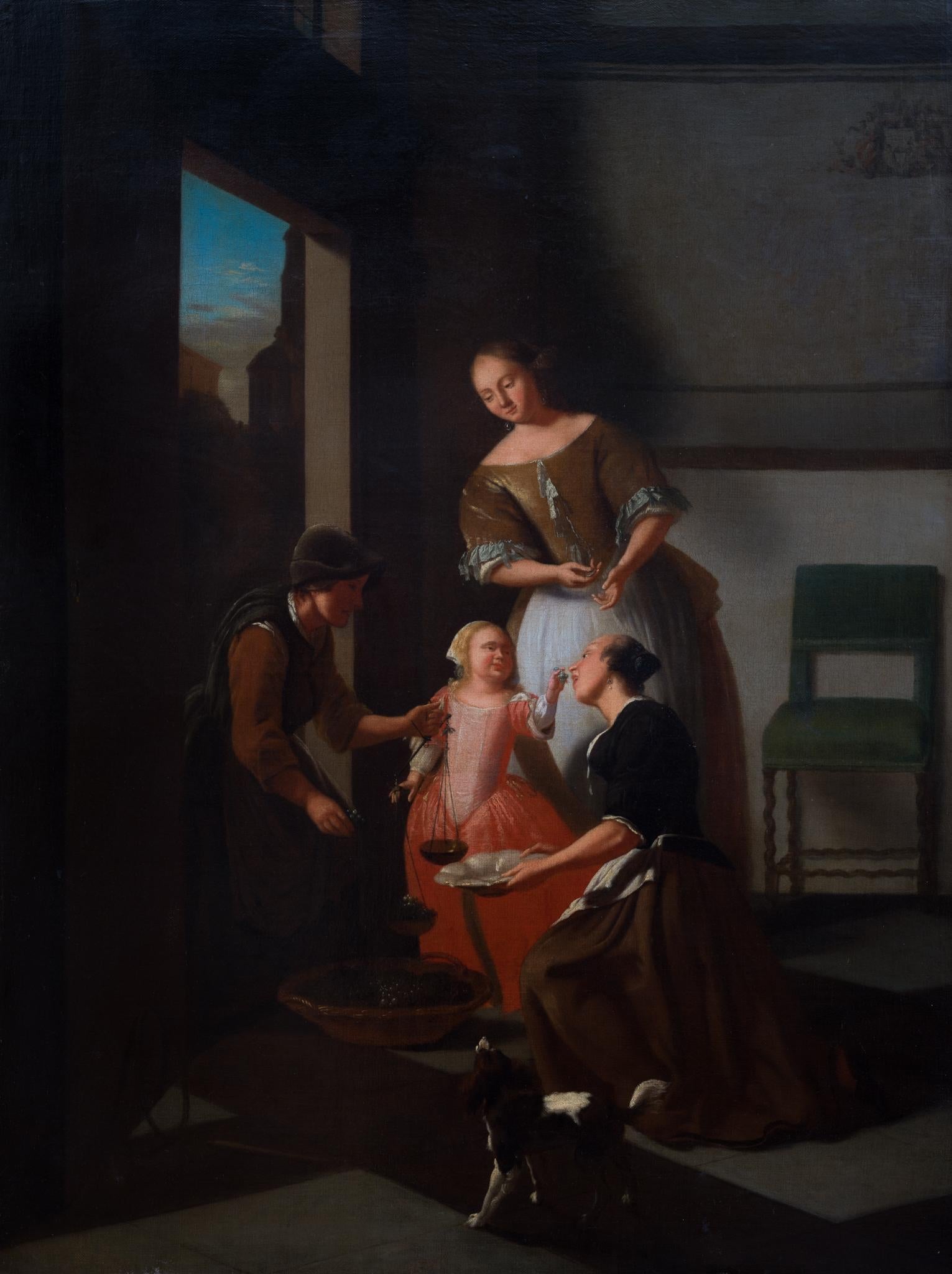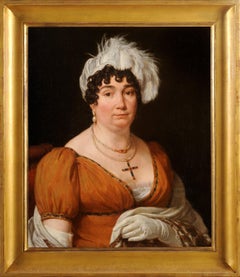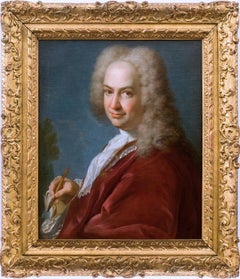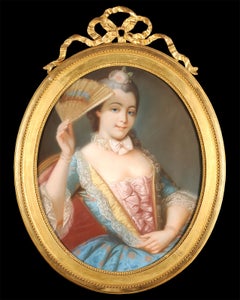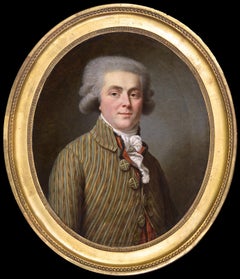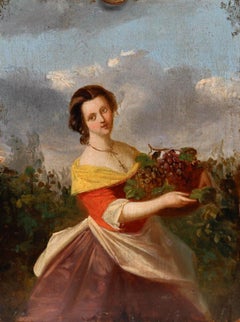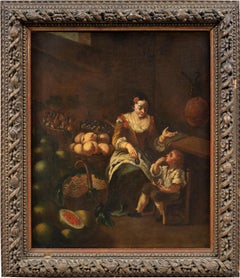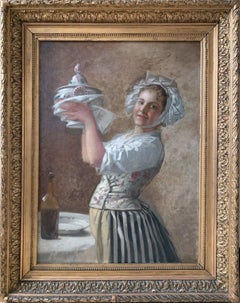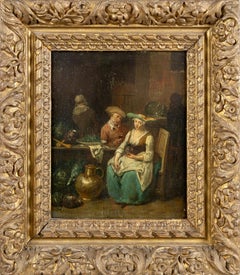Items Similar to The cabbage cutter
Want more images or videos?
Request additional images or videos from the seller
1 of 11
Jean-Baptiste SanterreThe cabbage cutterCirca 1700
Circa 1700
$16,846.85
£12,472.62
€14,000
CA$23,325.65
A$25,466.02
CHF 13,350.79
MX$309,294.68
NOK 166,729.69
SEK 157,437.29
DKK 106,584.99
About the Item
Jean-Baptiste SANTERRE
(Magny-en-Vexin, 1658- Paris, 1717)
The cabbage cutter
Oil on canvas
H. 86 cm; L. 70 cm
Jean-Baptiste Santerre began his apprenticeship in 1673, under the direction of the portrait painter François Lemaire, nephew of Jean Lemaire-Poussin, before entering the Bon Boulogne workshop, where he rubbed shoulders with young French artists such as Jean Raoux, Nicolas Bertin, or even Robert Levrac-Tournières. Very quickly, his style emerged from the Italianate influence of his master and moved towards the study of Nordic artists, Dou, Mieris, Rembrandt and especially Van Dyck, whose elegance of models, and the richness of the draped. A mention of Mercury also testifies to his attachment to the study of nature and his interest in anatomy. Few traces remain of the activity of Jean-Baptiste Santerre before 1698, the date on which he was approved by the Royal Academy. His reputation as a portraitist was undoubtedly already well established at this date, since around 1699 he produced the portraits of Boileau and Racine, which testify to his reputation in Parisian artistic cultural circles. The daughter of the Prince of Condé, the Duchess of Burgundy, as well as the Regent will also be among his models. However, Jean-Baptiste Santerre was never considered a rival by the great portrait painters of his time, Nicolas de Largillierre, Hyacinthe Rigaud or François de Troy, and it is essentially to his fantasy figures that he owes his fame. Our painting constitutes a perfect example of this type of painting, both portrait and genre image, of which Santerre made a specialty from around 1699; date of the Lady with the Veil from the Hermitage Museum. We find in our canvas the different characteristics specific to Santerre's fantasy representations, in particular the sobriety of the composition and the dark background nuanced with more or less dark browns, which tends to make the model stand out in the foreground. The physical type of the figure represented remains very close to most of his portraits, with soft features and reddened cheekbones. Sensual and languorous, this young woman captivates the viewer by making him imagine that the cuisine she is preparing is for his next dinner. Santerre produces several versions of this canvas, the variants of which are in the chosen colors, mainly on the side body of the cooker. The painter presented a version at the Salon of 1704. Is this one known from two anonymous engravings published in the following years? In any case, the version kept at the Museum of Fine Arts in Bordeaux, whose apron is blue, is strictly similar in composition, format and touch.
Our painting was seen by the Turquin firm.
- Creator:Jean-Baptiste Santerre (1651 - 1717, French)
- Creation Year:Circa 1700
- Dimensions:Height: 33.86 in (86 cm)Width: 27.56 in (70 cm)
- Medium:
- Movement & Style:
- Period:1700-1709
- Condition:
- Gallery Location:BELEYMAS, FR
- Reference Number:1stDibs: LU1857215597982
About the Seller
3.0
Vetted Professional Seller
Every seller passes strict standards for authenticity and reliability
Established in 2017
1stDibs seller since 2022
5 sales on 1stDibs
- ShippingRetrieving quote...Shipping from: BELEYMAS, France
- Return Policy
Authenticity Guarantee
In the unlikely event there’s an issue with an item’s authenticity, contact us within 1 year for a full refund. DetailsMoney-Back Guarantee
If your item is not as described, is damaged in transit, or does not arrive, contact us within 7 days for a full refund. Details24-Hour Cancellation
You have a 24-hour grace period in which to reconsider your purchase, with no questions asked.Vetted Professional Sellers
Our world-class sellers must adhere to strict standards for service and quality, maintaining the integrity of our listings.Price-Match Guarantee
If you find that a seller listed the same item for a lower price elsewhere, we’ll match it.Trusted Global Delivery
Our best-in-class carrier network provides specialized shipping options worldwide, including custom delivery.More From This Seller
View AllPortrait of Madame Leblond
Located in BELEYMAS, FR
French school circa 1815
Portrait of Madame Leblond
Oil on canvas
H. 66 cm; W. 55 cm
Named on the back
Comparable to the works of painters such as Louis Hersent, our portrait, unsig...
Category
1810s French School Figurative Paintings
Materials
Canvas, Oil
Presumed artist self-portrait
Located in BELEYMAS, FR
Louis-Gabriel BLANCHET
(Versailles, 1701 – Rome, 1772)
Presumed self-portrait of the artist
Oil on canvas
H. 73 cm; W. 60 cm
Circa 1730
Originally presented in a Restoration period frame with a "Mignard" cartouche, this beautiful painting initially appeared to us as a work from northern Italy. However, it exuded a rather French form of refinement, suggesting that its artist may have assimilated a dual influence from both sides of the Alps.
We thank our colleague and friend Philippe Mendès for spontaneously and judiciously "bringing out" the name of Louis-Gabriel Blanchet, a Romanized French portraitist, whose spirit and stylistic characteristics we clearly recognize here.
Blanchet's "French" years, before his final departure for Rome in 1728, following his winning of the second Grand Prix for painting after Subleyras in 1727, are extremely poorly documented. His father, Gabriel, was valet to Blouin, himself Louis XIV's first valet at the time. According to Thierry Lefrançois, Blanchet was one of the few students of Nicolas Bertin (1667-1736), whose studio he is said to have joined in the early 1720s. At a baptism on March 24, 1724, where he was godfather, he is mentioned as a painter in the picture store of the Duke of Antin, the director of buildings between 1708 and 1736. At this time, he was probably already married to Jeanne Quément, with whom he had a daughter also named Jeanne, who would marry Nicolas Aviet, the son of a valet in the queen's wardrobe, in Versailles in 1738.
When Blanchet arrived in Rome in October 1728, he was accompanied by Subleyras, Trémolières, and Slodtz. He enjoyed the goodwill of Vleughels, the director of the Académie de France, which had been based at the Palazzo Mancini since 1725, even though the latter was not always kind to our resident. From 1732, he was under the protection of the Duke of Saint-Aignan when he took up his post as ambassador to Rome. Along with Slodtz and Subleyras, they formed a trio of friends, joined by Joseph Vernet shortly after his arrival in Rome in 1734. Slodtz and Blanchet, on the occasion of Subleyras's marriage in 1739, were there to attest that their friend was not bound by any marital commitment, and Blanchet was a witness at Vernet's wedding in 1745.
It is most likely from these early years in Rome that our portrait of the artist dates, the expression and turn of his face irresistibly reminiscent of a self-portrait. The still relatively youthful features may correspond to Blanchet's thirty-something years, and the fluffy wig was still fashionable at this time.
The painting fits well with the depiction of a young painter wanting to display both the beginnings of success and a certain simplicity or restraint. A slight smile expresses a form of assurance in this man with a gentle, sincere gaze and a face radiating a keen sense of wit. We find here the air of intimacy present in almost all of Blanchet's portraits, even those from the 1750s and 1760s, as well as an almost complicity with the viewer. The spirit of the painting is quite close to that of the presumed portrait of Bouchardon (painted around 1730) and the portrait of Pannini, painted in 1736, but it possesses a more natural quality, notably thanks to the absence of decorum. Our work exhibits the characteristics of Blanchet's paintings: elegance, luminosity (especially in the whites), vibrant and refined colors (here, the harmony of the garnet of the garment and the slate blue of the background, whose uniformity is tempered by a very sketched landscape and a grove of greenery), light complexions, rather rosy cheekbones, often full lips, and rather tight framing.
According to the Academy's rules, Blanchet's stay should have ended in the spring of 1732, but, for reasons unknown, he remained in the Eternal City until his death, as did his friend Subleyras, with whom he shared accommodation until the late 1730s. The latter regularly called upon him to collaborate on his paintings, such as The Meal at Simon's. Through Saint-Aignan's intervention, Blanchet was employed in the late 1730s by the Stuart princely family, then exiled in Italy. He notably produced copies (now lost) after Liotard of the portraits of Charles Edward and Henry Benedict, the sons of James III Stuart. The latter also commissioned three other portraits (now in the National Portrait Gallery in London), whose more formal character contrasts with the intimate spirit of Blanchet's portraits. Blanchet frequented English painters, such as the landscape painter Richard Wilson, and studied with the Scottish portraitist Katherine Read...
Category
1730s French School Portrait Paintings
Materials
Oil, Canvas
Portrait of a young woman in Louis XV period dress
Located in BELEYMAS, FR
French School
Portrait of a young woman in Louis XV period dress
Pastel on paper mounted on oval canvas
H. 68 cm; W. 54 cm (Frame: H. 102 cm; W. 71 cm)
18th century frame, anti-refle...
Category
Mid-18th Century French School Figurative Paintings
Materials
Canvas, Paper, Pastel
Portrait of a man during French Revolution
Located in BELEYMAS, FR
Antoine VESTIER, attributed to
(Avallon, 1740 - Paris, 1824)
Portrait of a man under the Revolution
Oil on canvas
H. 46 cm; L. 37 cm
Circa 1793-95
This beautiful unsigned portrait i...
Category
1790s French School Figurative Paintings
Materials
Canvas, Oil
Portrait of a woman ironing
Located in BELEYMAS, FR
Paul LUNAUD
(Brantôme 1900 – 1949)
The ironer
Oil on wood
H. 80 cm; W. 64 cm
Signed and dated on the right in the center, formerly signed lower right.
1942
Provenance : Artist's stu...
Category
1940s French School Portrait Paintings
Materials
Oil, Wood Panel
Presumed portrait of Marie-Anne de Bourbon
By Nicolas de Largillière
Located in BELEYMAS, FR
Nicolas de LARGILLIERRE
(Paris 1656 – 1746)
Portrait of a woman, presumed to be Marie-Anne de Bourbon, Princess of Conti (1666-1739)
Oil on oval canvas
H. 8...
Category
Early 1700s French School Figurative Paintings
Materials
Canvas, Oil
You May Also Like
18th Century Oil - Grape Gatherer
Located in Corsham, GB
A charming oil study depicting a woman gathering grape vines in a field. Part of a pair of oils depicting women harvesting. Unsigned. On panel.
Category
Early 18th Century Portrait Paintings
Materials
Oil
Antique Italian painter - 18th century figure painting - The fruit seller
Located in Varmo, IT
Italian painter (18th century) - The fruit seller.
70.5 x 58.5 cm without frame, 88.5 x 75.5 cm with frame.
Antique oil painting on canvas, in a carved wooden frame (not signed).
...
Category
Late 18th Century Rococo Figurative Paintings
Materials
Canvas, Oil
$3,008 Sale Price
28% Off
La Servante Antonin Marie Chatinière (1828/1916
Located in GOUVIEUX, FR
Huile sur toile Dim sans cadre 92/70 cm Dim avec cadre 118/91 cm Ecole française Signé Chatinière 1898 Né en avril 1828 à Montpellier (Hérault). XIXe siècle. Français. Peintre et lit...
Category
Late 19th Century French School Figurative Paintings
Materials
Canvas
Kitchen Scene - 18th Century Oil on Panel
By Jan Baptist Lambrechts
Located in Stockholm, SE
A Kitchen Scene by Jan Baptist Lambrechts (Antwerp, 1680–1731)
The painting depicts a lively kitchen interior where a man, wearing a hat, raises a glass of red wine in a toast toward...
Category
Early 18th Century Flemish School Figurative Paintings
Materials
Oil, Wood Panel
The Grape Seller - Workshop of Jacob Ochtervelt
Located in Stockholm, SE
Jacob Ochtervelt (Workshop)
The Grape Seller
oil on canvas
unframed: 80.7 x 61 cm.; 31 ¾ x 24 in.
framed: 109.5 x 89 cm.; 43 1/8 x 35 in.
Essay:
This captivating piece, originating from the studio of the revered Dutch artist Jacob Ochtervelt, mirrors the composition of a signed and dated 1669 canvas by Ochtervelt that is presently housed in the Hermitage museum. Its subject, "The Grape Seller" immerses us in a typical 17th-century interior, replete with characters from various strata of society.
At the center, a fruit vendor is depicted bending over to weigh grapes for the buyer. A child hands some of the grapes to her mother to taste, their attentive maid standing by. The backdrop showcases typical Ochtervelt details: a hint of the city visible through the doorway, light filtering in through an overhead window, and a playful dog at their side.
The exquisite quality of the piece is evident in the minutiae, such as the intricate detailing of the mother's earring, which in reality spans only a few millimeters yet boasts impressive attention to detail. Initially, Sotheby's considered this work to be an autograph piece by Ochtervelt. But due to some uncertainty, it was auctioned as Workshop of Jacob Ochtervelt. On the other hand, the esteemed Cabinet Turquin in Paris leans toward attributing the piece directly to Jacob Ochtervelt himself.
The painting is framed in an authentic period frame, which has been delicately restored by Stockholm's Förgyllning och Bildhuggeri. The frame retains its age-old patina and, while in used condition, has minor imperfections adding to its charm.
Another interesting thing worth to mention is the painting's provenance. It was once owned by the 1st Viscount Rothermere (1868-1940), the founder of the Daily Mail and Daily Mirror...
Category
17th Century Old Masters Interior Paintings
Materials
Canvas, Oil
Portrait of a Gleaner - British Victorian art harvest portrait oil painting
By James John Hill
Located in Hagley, England
This absolutely lovely British Victorian oil painting is by noted Birmingham born artist James John Hill and has some excellent provenance below. The painting actually stayed in Birmingham for many years, hanging in Heathfield Hall, the former residence of inventor and engineer James Watt, but owned at that time by Thomas Pemberton. It then moved to Berwick House in Shropshire. Entitled The Gleaner and painted in1863, it is a charming half length portrait of a young woman with a sheaf of wheat under her arm. She is stood beneath trees and the wheat field is beyond. She is dressed in a lovely pink garment and wearing a brown felt hat, to shade her face from the sun, her dark hair cascading down her shoulder, The hat is decorated with a poppy. The soft tones and sympathetic rendering of the young woman make this a stunning 19th century oil painting with excellent provenance.
The painting is housed in its original gilt frame with a beautiful oak leaf motif.
Signed and dated 1863 lower left.
Provenance. Thomas Pemberton, Heathfield Hall, Handsworth, Birmingham.
(Heathfield Hall was the former residence of the inventor and engineer James Watt. Following his death the house had several occupiers including local luminaries Thomas Pemberton and George Tangye).
His sale, Christie's, 30 April 1874, lot 95 (69gns to James Watson) Berwick House, Shropshire.
(James Watson (1817-1895) was an English merchant, dairy herdsman and Conservative politician who sat in the House of Commons from 1885 to 1892)
Condition. Oil on canvas, 34 inches by 28 inches unframed, in good condition.
Frame. Housed in its original gilt frame with oak leaf motif, 42 inches by 36 inches and in good condition.
James John Hill RBA (1811 – 27 January 1882), known also by his alias J. J. Hill, was an English landscape and portrait painter, known for his many rustic paintings and portraits of Lady Burdett-Coutts. James John Hill was born sometime in 1811 in Broad Street, Birmingham to Daniel Hill, plater, and Elizabeth Rowlinson, the daughter of a brass founder. He was educated at Hazelwood School, a school founded by the educational reformer Rowland Hill...
Category
1860s Victorian Portrait Paintings
Materials
Oil
$35,269 Sale Price
20% Off
More Ways To Browse
Antique Cutter
Antique Cookers
Francois De Troy
Antique Cabbage Cutter
1940s British Painting
A Churchill Painting
Andy Warhol Studio 54
Battista Salvi
Battista Sassoferrato
Female Self Portrait Paintings
Floris Frans
Girl Privates
Jack King
Jorunn Mulen
Margaret Thomas
Oil Painting And Sir
Old American Portraits
Peasant Girl Painting
